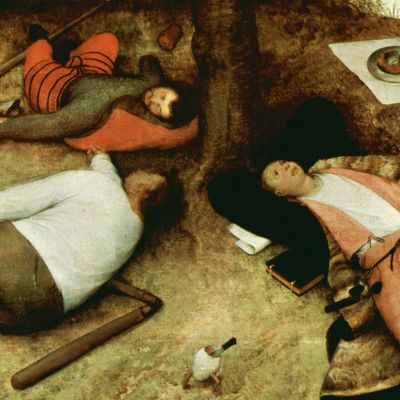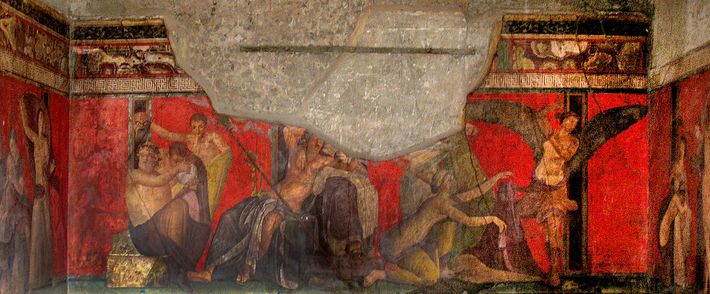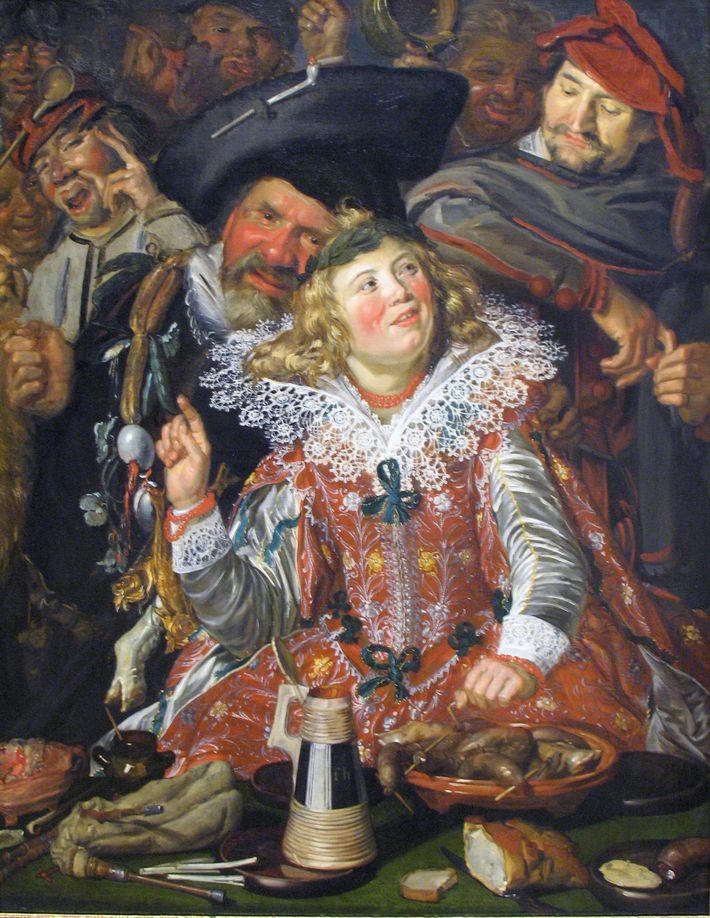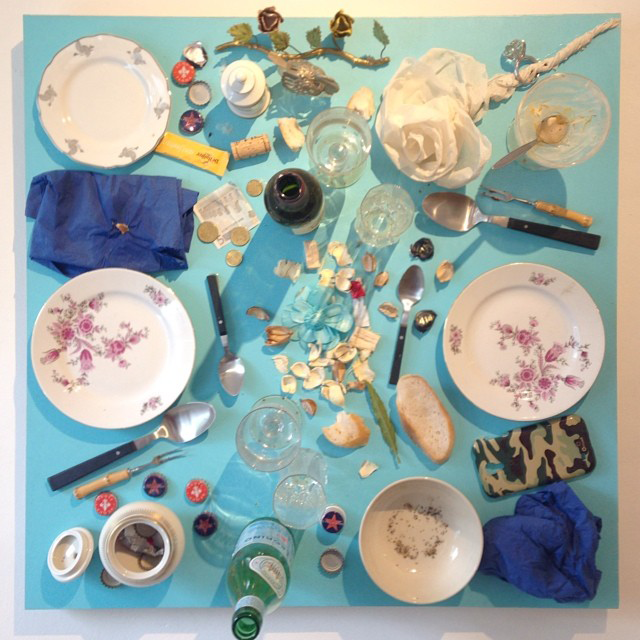
ThereÔÇÖs a very good reason gluttony is one of the seven deadly sins. Eating and drinking are two of lifeÔÇÖs greatest pleasures ÔÇö our only problem seems to be not knowing when to stop. Of course,┬áThanksgiving wasnÔÇÖt the first event in history that caused the unbutton-your-pants-at-the-table move (or, in the case of the Romans, loosening your robe) at the end of the night. Lucky for us, art history provides countless depictions of our descent into food-related madness. So, before you indulge in a tryptophan-fueled evening, let us walk you through a more vivid display of what your Thursday night with the family (or friends) has the potential to become.

WeÔÇÖll start, for the sake of brevity, with Bacchus, who was the Greco-Roman god of wine but also served as a spiritual metonym for feast and fortune. The naughtiest mementos of the RomansÔÇÖ proclivity for debauchery existed in Villa of Mysteries in Pompeii. The villa is not only famous for its heavily sexualized imagery, but also for its food porn, which, as seen above, shows Bacchus passed out from his own overzealous consumption.
Then thereÔÇÖs the classic┬áLand of Cockayne┬á(1567) by┬áPieter Bruegel the Elder.┬áPay close attention to the man in red: Even then, he couldnÔÇÖt keep his pants on. More important, he couldnÔÇÖt even finish the turkey. Call this the first depiction of the leftover.

While eating with the Dutch is a formidable task, have you ever tried drinking with them? Frans Hals did, and his┬áMerrymakers at Shrovetide┬á(1616ÔÇô17) famously became a touchstone for revelry in Western painting. Those meaty cheeks, flush from face-stuffing, have, not surprisingly, also been read as a metaphor for sex ÔÇö but whatÔÇÖs probably most striking is just how much damn fun everyone seems to be having.
If you skip ahead a few hundred years (we said brief, didnÔÇÖt we?), youÔÇÖll land in the 1960s, where youÔÇÖll find the apotheosis of gluttony in Otto Muehl, the Austrian actionist whose films were often banned by the state because they were seen as a threat to public safety and morality. As you can tell in┬áKardinal, Muehl is a menace ÔÇö naked people are being flogged and splattered with condiments, animal intestines, milk, eggs, basically whatever food substances Muehl had handy. Grotesque, sure, but certainly a reflection of the mentality of excess that feasting conjures.

The feast adopts a more abstract perspective by the latter half of the 20th century with Daniel Spoerri, who was part of the Zero Group and has made some of our favorite depictions of a dinner table at the end of a meal. Take┬áAssemblage, from 1992, which is part of SpoerriÔÇÖs ongoing series ÔÇ£Eat Art,ÔÇØ and which comments on the connection between consumption and tastes. His work poses an important question: Is it life or is it art to consume all that food? WeÔÇÖll leave that for you to contemplate while youÔÇÖre incapacitated on the couch and deflecting questions from your creepy uncle.


